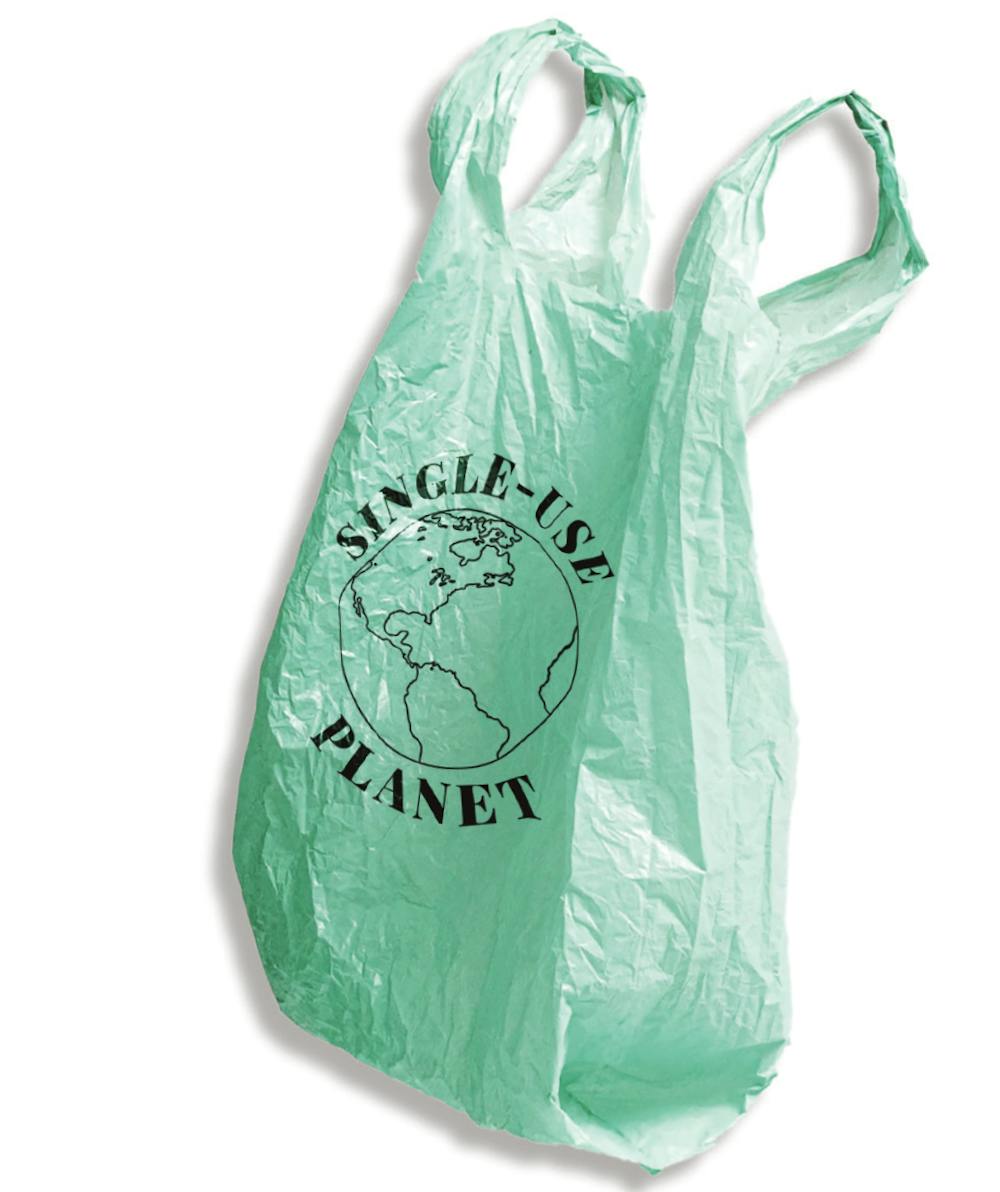Miguel Naranjo is a freshman journalism major and writes “Cualquiera Bandera” for The Daily News. His views do not necessarily reflect those of the newspaper.
In my neighborhood back in my hometown, there was a playground with a small creek behind it, and along that creek was a path that led to a small forest. If I had to guess, it was a time-and-a-half bigger than Christy Woods. When I discovered this place, I was astounded by the environment.
The canopy blocked out the sun, the birds and bugs were constantly chirping and the aforementioned creek cut through the whole place — I immediately fell in love. I found myself coming back just to explore something so different from the concrete roads and small patches of grass I had lived with for the previous 16 years.
At least, I did until the landowner showed me the bounds of his property and his “No Trespassing!” signs.
That experience, however brief, opened my eyes to the beauty and fragility of the environment, and the dangers of deforestation, pollution and climate change were all put into perspective for me. However, of the myriad of dangers to the environment, there is none more threatening than plastic, a symbol of society’s disregard for the environment.
Single-use plastics make our lives easier and more convenient, and that’s why we love them, but it’s important not to lose sight of why corporations love them. It’s not for the same reason we do.
Single-use plastics are absolutely everywhere — food containers, cups, bottles, silverware and far more things. In my part-time job at Olive Garden, I can find it in the most obscure of places, like in the tiny packets of sugar we serve with patrons’ coffee.
There is no doubt that plastic has increased the standard of living in the U.S. and beyond, but there is an egregious amount of it in the world. Approximately 380 tons of plastic are produced each year worldwide, according to Our World in Data.
In terms of pollutants, plastic is a special case because it has a sturdy chemical composition that takes centuries to decompose. It doesn’t biodegrade either; it only breaks apart into smaller pieces of plastic. If it becomes a plastic smaller than 5 millimeters long, then it’s classified as a microplastic.
The most frightening example of plastic pollution is the Great Pacific Garbage Patch in the northern end of the Pacific Ocean. It’s not actually a huge mass of plastic but rather two systems of ocean currents west of California and east of Japan that trap plastic in their centers, according to National Geographic.
According to a 2018 study, there are 79,000 tons of plastic in the Great Pacific Garbage Patch alone. These plastics polluting the ocean are being eaten by marine life, including fish, aquatic mammals and seabirds, often to fatal effect.
In spite of plastic’s negative effects on the environment, plastic production and plastic pollution show no signs of slowing down in the near future. Single-use plastic, after all, is a hallmark of capitalist innovation and consumerist culture.
On April 22, 1946, the first National Plastics Exposition took place in New York City, showcasing all the different ways that plastic would be able to allay the numerous material shortages and supply chain problems that resulted from World War II. This was the first time Americans would be asked to adopt plastics into their lifestyles, and America as a whole enthusiastically adopted it.
It also was the beginning of America’s “throw-away” culture, according to clearwateraction.org. People could replace anything that they used with another identical product. In the case of soda bottles, people used to keep their glass bottles until they could refill them at a soda fountain or give them back to the store it came from. In the present day, we toss the plastic bottle in the recycling bin — if there’s one available — and grab another one from the six-pack of drinks in the fridge, no middleman needed.
Plastic is dirt cheap – wholesale prices for plastic pellets are about $1.50 per kilogram, according to alibaba.com. Any product made and packaged with plastic is going to be cheap to produce as well.
Combine that with the fact that companies don’t have to deal with the product beyond shipping it out to distributors (since it’s so light, it also costs less to ship plastic than any heavier alternative), and plastic is a blessing for corporations’ bottom line.
For this reason, corporations will advocate for single-use plastics however they can. Companies like Coca-Cola publicize that their plastics are eco-friendly and sustainable because their bottles are composed of about 30 percent recycled material, and on the surface, that sounds great.
However, in 2018, National Geographic found that only 9 percent of plastic waste had actually been recycled. Most of it – about 80 percent of 6.3 billion metric tons – made its way to landfills all across the world. Recycling is not as effective of a method of reducing plastic pollution as Coca-Cola presents it to be.
Coca-Cola is still part of the problem that it claims to be trying to solve, as are other soda companies and shipping companies like Amazon that put plastic in their boxes when shipping their products to cushion the contents inside. As long as the public believes that they’re working on the issue, however, these companies can still expect to make sales.
In short, what matters to the public doesn’t always line up with what matters to manufacturers and corporations. Even then, all three of them are inherently linked: manufacturers make goods that corporations market to the public, who then buy those goods.
It’s at this point we have to ask: “What matters to us?”
Is widespread pollution from long-lasting plastics and reduced biodiversity from polluting the oceans worth the simplicity of tossing a single-use plastic in the trash and being completely done with it?
Half of plastic’s prevalence comes from us, the public. Manufacturers keep making it, companies keep making products with it, but we also keep buying it. If environmental health matters to the public, then it has to reflect in our purchasing habits and in all that we throw away.
There are alternatives to common single-use plastics. Some coffee shops can fill a reusable cup instead of using a coffee cup lined with plastic; Starbucks is testing this as a way to phase out their disposable coffee cups, according to a press release from their website. Also, bar soaps and bar shampoo can be used instead of the liquid forms that come in plastic bottles.
Similarly, there are also grocery stores like The Fresh Market in Indianapolis that are dedicated to environmental sustainability and offer alternatives to buying plastic-wrapped goods. While uncommon in the U.S., these stores do exist and are ways to cut back on waste.
We’re used to having an excess of things thanks to plastic. We have an excess of food, drinks, tools, utensils, bags, clothes, etc. How much do we really need? More importantly, how much has to go to waste?
I try to reduce my plastic waste by using a reusable water bottle and using tote bags instead of plastic bags, but then I put on my work uniform to clean tables at Olive Garden and feel like a hypocrite as I dump paper, single-use plastics and food waste alike into big trash bins that come up to my hip. No recycling or composting – just trash bins.
It reflects that the world at large believes that trash is just trash and it doesn’t matter where it goes so long as it goes away. We can’t have our cake and eat it, too. Single-use plastic was designed to facilitate our lives, but it’s hurting us at the same time, and corporations are more than happy to pollute the earth for as long as we throw money at them.
Something has to change, and it has to be the public.
Contact Miguel Naranjo with comments at miguel.naranjo@bsu.edu.





